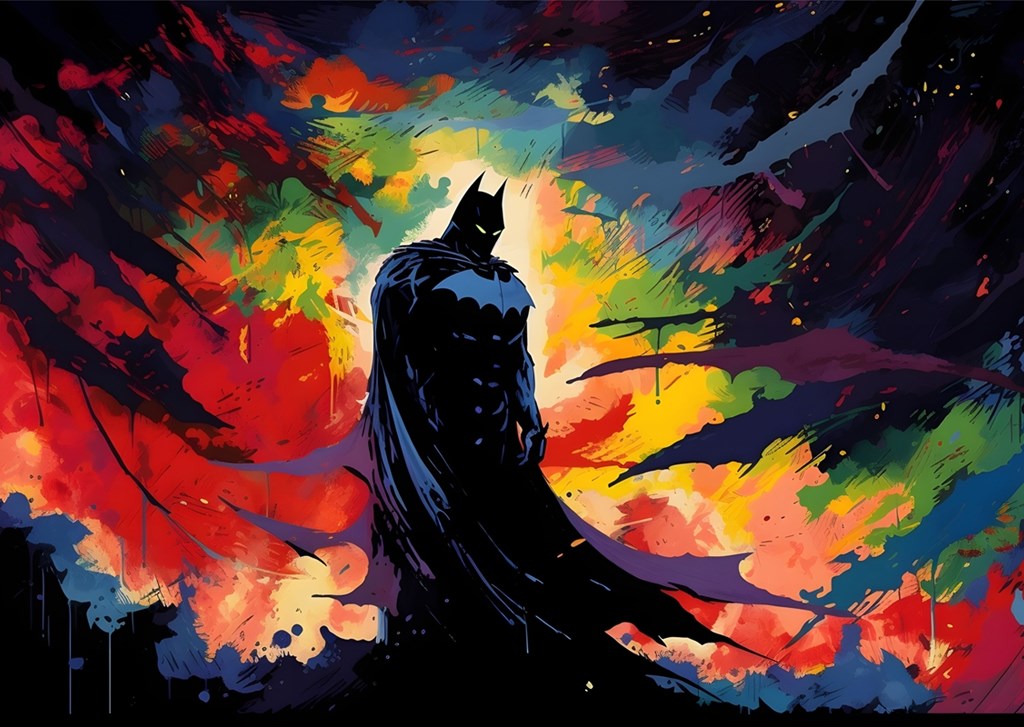Introduction
Batman, the caped crusader of Gotham City, has been a staple of pop culture since his debut in 1939. His legacy spans across comics, TV shows, movies, and more. But one of the most compelling aspects of Batman’s enduring popularity is the art that brings his dark world to life. From the early days of comic books to the intricate fan art seen today, batman comic art is a fascinating blend of styles, themes, and creativity.
The Evolution of Batman Art
Early Batman Comics
Batman made his first appearance in Detective Comics #27, created by Bob Kane and Bill Finger. The early art was simple, with bold lines and basic color schemes. Batman’s look was heavily influenced by the pulp heroes of the time, with a mysterious, shadowy figure that captured readers’ imaginations.
The Golden Age of Comics
During the Golden Age of comics (1930s-1950s), Batman’s art evolved to become more dynamic and detailed. Artists like Jerry Robinson and Dick Sprang introduced more expressive characters and action-packed scenes, setting the stage for Batman’s iconic look.
The Silver Age Transformation
The Silver Age (1956-1970) brought significant changes. batman comic art became more colorful and whimsical, reflecting the era’s lighter storytelling. This period introduced Batgirl and other characters, adding diversity to the visual narrative.
Modern Batman: Dark and Gritty
In the 1980s, Frank Miller’s “The Dark Knight Returns” revolutionized Batman’s image. The art became darker and more realistic, emphasizing Gotham’s gritty, crime-ridden atmosphere. This shift continued into the 21st century, with artists like Jim Lee bringing a hyper-detailed, almost cinematic quality to Batman comics.
Iconic Batman Artists
Bob Kane and Bill Finger
As the original creators, Bob Kane and Bill Finger set the foundation for Batman’s artistic style. Kane’s initial designs were refined and expanded by Finger’s storytelling, creating a rich visual world.
Neal Adams’ Revolutionary Work
Neal Adams is credited with bringing a new level of realism and dynamic action to Batman in the 1970s. His work redefined the character, emphasizing a more human and physically capable Batman.
Frank Miller’s Dark Knight
Frank Miller’s contribution cannot be overstated. His dark, gritty art style in “The Dark Knight Returns” and “Batman: Year One” reshaped Batman’s image for a mature audience, influencing countless artists and adaptations.
Jim Lee’s Iconic Style
Jim Lee’s work on “Batman: Hush” and other titles is renowned for its detail and dynamic composition. Lee’s Batman is muscular, imposing, and incredibly detailed, blending traditional comic art with modern sensibilities.
Artistic Themes in Batman Comics
The Gothic Aesthetic
Batman’s world is often depicted with a gothic aesthetic, featuring towering skyscrapers, dark alleyways, and ominous gargoyles. This style enhances the themes of mystery and fear.
The Use of Shadows and Light
Batman’s art extensively uses shadows and light to create mood and tension. Artists play with contrasts to highlight Batman’s dual nature as both a hero and a vigilante.
Symbolism in Batman Art
Symbolism is prevalent in Batman art, from the Bat-signal lighting up the sky to the recurring imagery of bats. These symbols reinforce Batman’s identity and his mission.
Color Palettes: From Bright to Dark
The color palette in Batman comics has shifted from bright and vibrant in the early days to darker, muted tones in modern times. This change reflects the evolving tone of Batman stories.
Batman in Other Art Forms
Batman in Animation
Batman has been a popular character in animation, from the campy “Batman: The Animated Series” to the darker “Batman Beyond.” The art styles vary widely, showcasing the character’s versatility.
The Art of Batman Movies
Batman movies have brought the character to life with stunning visual effects and set designs. Directors like Tim Burton and Christopher Nolan have left their mark with distinct artistic visions of Gotham City.
Batman in Video Games
Video games like the “Arkham” series feature highly detailed and immersive environments, pushing the boundaries of what Batman art can achieve in interactive media.
Fan Art and Its Impact
The Rise of Batman Fan Art
Fan art has become a significant part of Batman’s cultural presence. Fans create and share their interpretations of Batman, contributing to the character’s enduring appeal.
Popular Fan Artists
Artists like BossLogic and Francis Manapul have gained recognition for their unique takes on Batman, often blending styles and mediums.
Platforms Showcasing Fan Art
Platforms like DeviantArt and Instagram are hotspots for Batman fan art, allowing artists to reach a wide audience and gain feedback on their work.
Collecting Batman Art
Popular Batman Art Pieces
Limited edition prints, original comic book pages, and statues are highly sought after by collectors. Pieces by renowned artists like Neal Adams and Jim Lee are especially prized.
Where to Buy Batman Art
Collectors can find Batman art at comic conventions, online marketplaces like eBay, and specialized comic book stores.
Tips for Collecting
When collecting Batman art, consider the artist’s reputation, the condition of the piece, and its rarity. Investing in high-quality frames and preservation materials can also help maintain the art’s value.
Batman Art Exhibitions
Notable Exhibitions
Exhibitions like “Batman: Black and White” showcase original art and iconic pieces, offering fans a chance to see Batman through the eyes of various artists.
Virtual Art Shows
With the rise of digital platforms, virtual art shows have become popular, allowing fans worldwide to experience Batman art from the comfort of their homes.
The Influence of Batman ar’t
Impact on Pop Culture
Batman’s visual style has influenced numerous other media, from fashion to architecture. The character’s iconic look and the dark, brooding atmosphere of Gotham City are instantly recognizable.
Batman’s Influence on Other Superheroes
Batman’s art has set a standard for superhero aesthetics, inspiring other characters’ designs and the overall tone of superhero comics and films.
Creating Your Own Batman ar’t
Tips for Aspiring Artists
Aspiring Batman artists should study the works of iconic artists, practice regularly, and develop their unique style. Understanding anatomy, perspective, and lighting is crucial.
Tools and Resources
Digital tools like drawing tablets and software (e.g., Photoshop, Procreate) are popular among modern artists. Traditional tools like pencils, inks, and markers are also essential.
Inspiration and Ideas
Finding inspiration can come from re-watching Batman movies, reading comics, or exploring other artists’ work. Developing a story or theme for your art can also help guide your creativity.
Conclusion
Batman art is a dynamic and evolving field, reflecting the character’s rich history and cultural impact. From comic book pages to fan art, Batman continues to inspire and captivate audiences worldwide.
FAQs
What makes Batman art unique?
Batman ar’t stands out due to its dark, gothic aesthetic and the use of shadows and symbolism to convey the character’s themes and stories.
Who are the most famous Batman artists?
Some of the most renowned Batman artists include Bob Kane, Neal Adams, Frank Miller, and Jim Lee, each bringing their unique style to the character.
How has Batman ar’t evolved over the years?
Batman ar’t has evolved from simple, bold lines in the early comics to detailed, realistic portrayals in modern times, reflecting changes in storytelling and artistic techniques.
Where can I buy Batman art?
Batman art can be purchased at comic conventions, online marketplaces, and specialized comic book stores. Limited edition prints and original pages are popular among collectors.
How can I start creating Batman art?
To start creating Batman art, study iconic artists, practice regularly, and develop your unique style. Utilize digital and traditional tools, and seek inspiration from various Batman media.







